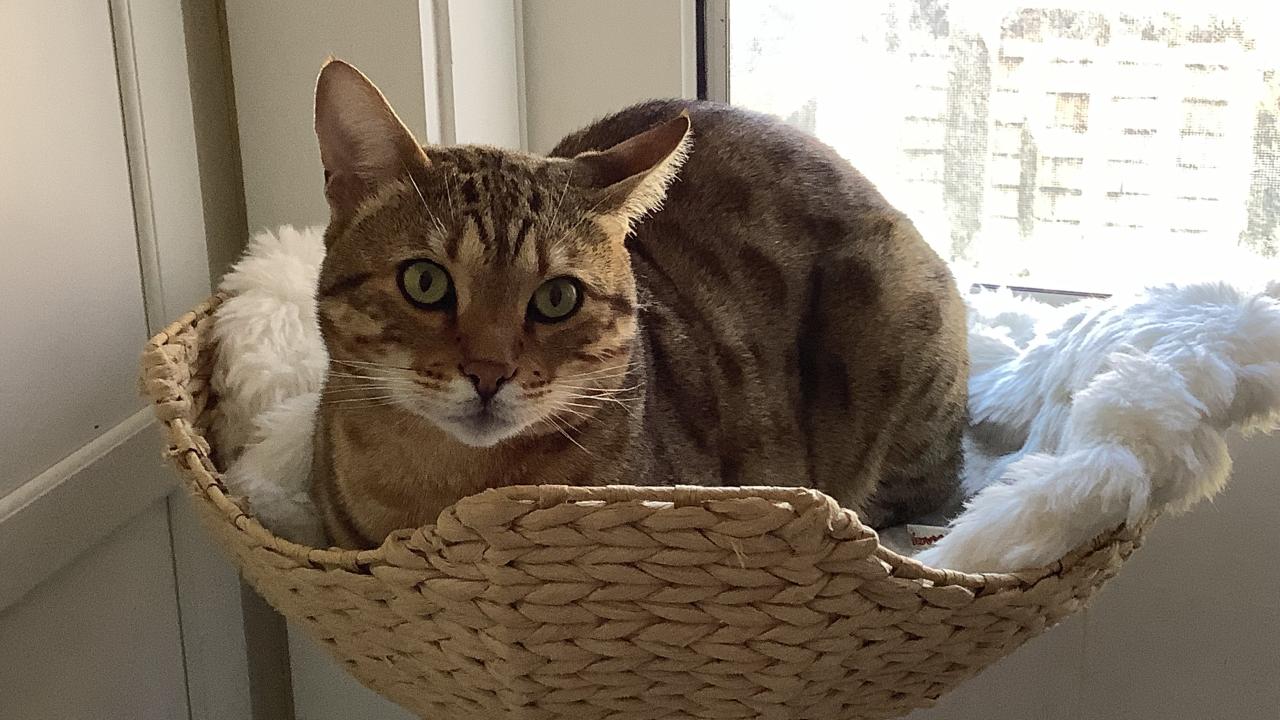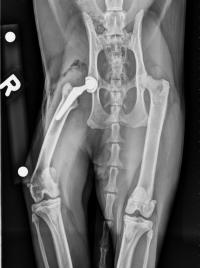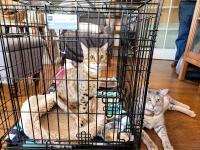
Young Cat Back to Full Activity after Total Hip Replacement
“Case of the Month” – March 2024

Atlas, a 2-year-old male cheetoh cat (Bengal/ocicat cross), is a fearless daredevil who likes to get into mischief, always wanting to climb to the highest heights he can reach in the house. Unfortunately, those activities caught up with him last May when he became acutely lame after jumping down from an elevated structure at home. X-rays showed a displaced fracture of the right femoral head that would require surgery.
The Orthopedic Surgery Service at the UC Davis veterinary hospital discussed several options with owners Sheila Dukas-Janakos and Ross Hite. They chose to give Atlas a total hip replacement, which utilizes a stem implant placed in the femur topped with a ball joint that interacts with a cup implanted in his pelvis.
Total hip replacements remove the source of pain associated with the hip joint and return animals to full function. While UC Davis has performed many canine hip replacements, the procedure is relatively new on cats, with limited long-term follow up research. However, the little that is available shows evidence of good function recovery.
“Atlas’ care team was so patient with us, explaining everything in full detail,” said Dukas-Janakos. “I can’t tell you how grateful we were for getting a surgery appointment at UC Davis.”
Due to an increase in pet ownership during the pandemic and a steady increase in caseload, the Orthopedic Surgery Service now experiences a continual demand for its high caliber and cutting-edge services, resulting in a backlog of patients.
To address the growing caseload and increasing demand for orthopedic surgeries, UC Davis will open the Center for Advanced Veterinary Surgery in the coming weeks. The standalone center is located just steps from the veterinary hospital and encompasses 25 rooms and 7,300 square feet of space including three state-of-the-art operating rooms.
Since Atlas’ injuries were not life threatening, his surgery took place in July 2023. He was placed on cage rest for the six weeks leading up to the surgery so the injury would not worsen.

Atlas did well during the successful surgery performed by faculty members Drs. Po-Yen Chou and Denis Marcellin-Little. The surgery, rare in cats, was performed based on 3D computer assisted design planning rather than previous surgical planning methods based on radiograph films. He was hospitalized for a month to ensure the best recovery and then was placed back on strict cage rest for two more months at home. Throughout the process, Atlas was kept mildly sedated to help with the anxiousness of an active young cat being so restricted.
In October 2023, x-rays after three months showed success with the implant remaining in a stable position, and Atlas’s gait was normal without noticeable lameness.
By November 2023, Atlas was allowed to be slowly reintroduced to normal activity. Now, eight months post-surgery, Dukas-Janakos reports Atlas is nearly 100% recovered, and he is allowed unrestricted activity, but his owners attempt to keep his former high impact activities to a minimum.
“We couldn’t be more pleased with everything the UC Davis surgery team did for him,” Dukas-Janakos stated.
# # #
